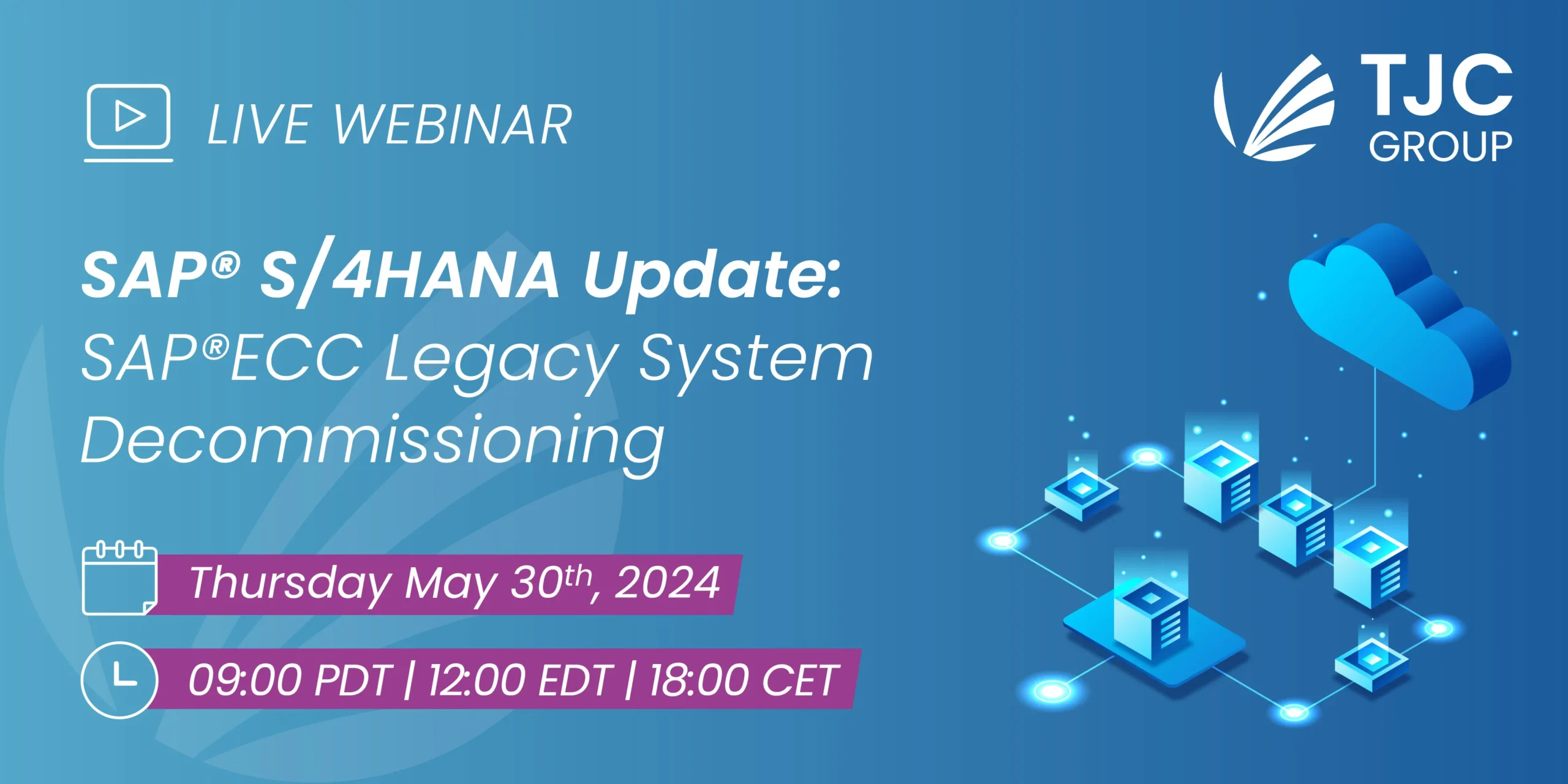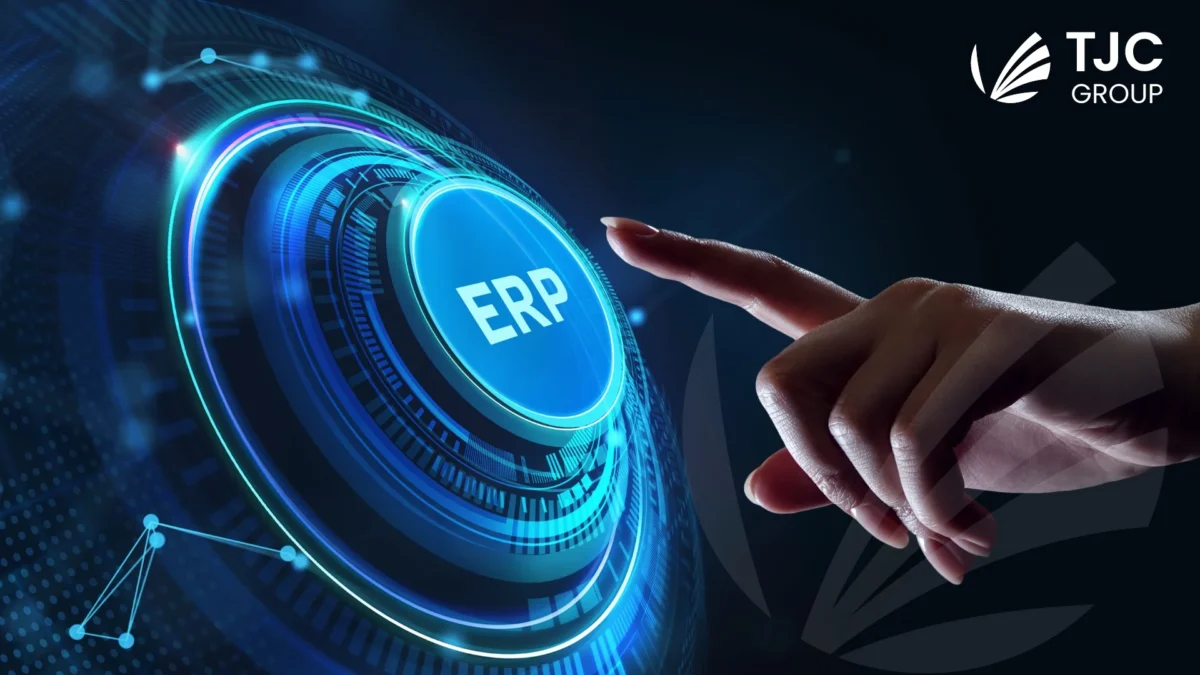SAP hat in den letzten Jahren einen drastischen Wandel vollzogen. Von der traditionellen ERP-Software bis zur Entwicklung innovativer Cloud-Lösungen ist das Unternehmen gewachsen – und wie! Heute hören wir vom System SAP S/4HANA, vor ein paar Jahren war es SAP ECC – aber haben Sie jemals darüber nachgedacht, wie sich die Enterprise Resource Planning- oder ERP-Systeme im Laufe der Jahre entwickelt haben?
Unsere Neugier und die Bereitschaft, sie mit unseren Lesern zu teilen, haben uns dazu veranlasst, einen detaillierten Einblick in die Entwicklung von SAP ERP-Systemen zu geben: von On-Premises-Systemen zu den Systemen der nächsten Generation. Scrollen Sie nach unten, um mehr zu erfahren!
Inhaltsübersicht
- Der Beginn einer revolutionären Ära
- Etappen der ERP-Evolution: Von Vor-Ort- zu Hybrid-Lösungen
- Die Zeitachse der ERP-Systeme von SAP
- SAP ERP vs. SAP ECC: Was ist der Unterschied?
- Das ERP-System der nächsten Generation – S/4HANA
- Warum ist die Datenvorbereitung für die S/4HANA-Migration wichtig?
- Die wichtigsten Erkenntnisse
Der Beginn einer revolutionären Ära
Als fünf ehemalige IBM-Mitarbeiter 1972 das Unternehmen Systems, Applications, and Processing in Data Management, heute bekannt als SAP, gründeten, war die Absicht, Anwendungssoftware für integrierte Unternehmenslösungen zu entwickeln. Heute, einige Jahre später, ist das Unternehmen einer der größten unabhängigen Softwareanbieter der Welt. Gegründet von Dietmar Hopp, Claus Wellenreuther, Hasso Plattner, Klaus Tschira und Claus E. Heinrich, hat SAP in den Jahren seines Bestehens bedeutende Meilensteine gesetzt, darunter die Entwicklung hybrider Modelle, die Integration von KI, maschinelles Lernen und vieles mehr.
Im Laufe der Jahre verlagerte das Unternehmen seinen Schwerpunkt von der reinen Entwicklung von Anwendungssoftware auf die Entwicklung von ERP-Systemen, mit denen Unternehmen ihre Kernprozesse automatisieren und integrieren können. Im Jahr 1979 brachte SAP seine erste ERP-Lösung auf den Markt – SAP R/2, die für Großrechner konzipiert war. Nach dem Erfolg von R/2 brachte das Unternehmen 1992 SAP R/3 auf den Markt. Damit wurde SAP R/3 zum Flaggschiffprodukt des Unternehmens und etablierte SAP als einen bedeutenden Akteur auf dem ERP-Markt.
Das Unternehmen, das seinen Hauptsitz in Deutschland hat, dehnte seine Tätigkeit über das Land hinaus aus und etablierte eine globale Präsenz. Interessanterweise eröffnete SAP sein erstes internationales Büro 1988 in den Vereinigten Staaten und hatte 1991 bereits Niederlassungen in rund 50 Ländern. Heute ist SAP in mehr als 180 Ländern vertreten und beschäftigt weltweit mehr als 100.000 Mitarbeiter.
Etappen der ERP-Evolution: Von Vor-Ort- zu Hybrid-Lösungen
Wie bereits erwähnt, hat SAP im Laufe der Jahre enorme Veränderungen durchlaufen – von traditionellen On-Premises-Lösungen bis hin zu hybriden Modellen, die Cloud-Funktionen nutzen. Diese Entwicklungsstufen spiegeln die sich ständig ändernden Markttrends wider. Außerdem zeigen sie die Notwendigkeit für Unternehmen, flexibel und wettbewerbsfähig zu bleiben.
Stufe 1: Vor-Ort-Lösungen
In der ersten Phase der ERP-Systeme konzentrierte sich SAP auf die Bereitstellung von On-Premises-Lösungen, hauptsächlich für größere Unternehmen. Die Lösungen wurden für den internen Einsatz auf physischen Servern konzipiert und entwickelt. Dies ermöglichte es den Unternehmen, die vollständige Kontrolle über ihre Abläufe und Daten zu erhalten. Trotz dieser Vorteile erwies sich die Verwaltung von On-Premises-ERP-Systemen als schwierig, da sie erhebliche Vorabinvestitionen in Form von IT-Infrastruktur und spezialisierten Support-Teams erforderten.
Stufe 2: Das Aufkommen von Cloud-Lösungen
Mit dem Aufkommen des Cloud Computing hat SAP seinen Schwerpunkt auf die Entwicklung von ERP-Systemen verlagert, auf die von überall und zu jeder Zeit zugegriffen werden kann. Cloud-Lösungen bieten Unternehmen mehr Flexibilität, Skalierbarkeit und Kosteneffizienz und ermöglichen es ihnen, sich viel einfacher und effizienter an die sich ändernden Marktanforderungen anzupassen. Zu den Cloud-Lösungen von SAP gehören Software-as-a-Service (SaaS) Systeme wie SAP S/4HANA Cloud und SAP SuccessFactors sowie Platform-as-a-Service (PaaS) wie die SAP Cloud Platform, SAP Business Technology Platform und so weiter.
Stufe 3: Die Hybridmodelle
Da SAP die Grenzen der Innovation immer weiter hinausschiebt, haben hybride Modelle, die die Fähigkeiten von On-Premises und der Cloud kombinieren, es Unternehmen ermöglicht, die Vorteile beider Welten zu nutzen. Sie ermöglichen es Unternehmen, die Kontrolle über geschäftskritische Anwendungen und Daten zu behalten und die Vorteile der Flexibilität und Skalierbarkeit der Cloud zu nutzen. Die hybriden Modelle helfen dabei, ein Gleichgewicht zwischen Kontrolle und Flexibilität auf dem sich ständig verändernden Markt herzustellen. Die Umstellung auf diese Lösungen von SAP ermöglicht es Unternehmen, Kosten zu senken, die Effizienz zu verbessern und in der sich wandelnden digitalen Landschaft wettbewerbsfähig zu bleiben. Zwei der gefragtesten hybriden ERP-Lösungen von SAP sind die SAP HANA Enterprise Cloud und SAP S/4HANA Embedded Analytics.
Die Zeitachse der ERP-Systeme von SAP
Die Zeitlinie der ERP-Systeme von SAP oder sogar als Unternehmen ist unglaublich interessant. Lassen Sie uns darüber sprechen –
1972: Das Jahr der Gründung
Jeder weiß, dass SAP im Jahr 1972 gegründet und als Unternehmen eingetragen wurde. Was viele nicht wissen, ist, dass dies auch das Jahr des ersten Meilensteins von SAP in Form von SAP R/1 war.
SAP R/1 wurde als Finanzbuchhaltungssystem eingeführt, das auf dem Mainframe in einer einstufigen Architektur lief. R/1 wurde entwickelt, um Unternehmen ein zentralisiertes System zur Verfügung zu stellen.
Zwischen 1973 und 1975 wurde SAP weltweit tätig und installierte zum ersten Mal Software bei Coop und Georg Fischer – einem Schweizer Unternehmen.
Zwischen 1975 und 1978 erwarb SAP seinen allerersten Computer, einen Siemens 7738 Mainframe, und leitete damit einen Technologiewandel in Richtung SAP R/2 ein.
1979: Das Jahr des ersten ERP-Systems von SAP
1979 brachte SAP sein erstes ERP-System auf den Markt, das über die reine Finanzbuchhaltung hinausging – das SAP R/2. Das R/2 erweiterte die Möglichkeiten weiter, indem es sowohl die Materialwirtschaft als auch den Vertrieb einbezog. Obwohl es weiterhin auf Mainframes lief, handelte es sich im Wesentlichen um eine zweistufige Mainframe-Architektur. (In der Tat steht die 2 in R/2 für die zweistufige Architektur).
Zwischen 1980 und 1988 etablierte SAP R/2 seine Präsenz und seine Vormachtstellung bei ERP-Systemen auf dem Markt. Im Jahr 1988 ging das Unternehmen als SAP AG an die Börse und expandierte damit weltweit.
1992: Das nächste ERP-System für Unternehmen
1992 brachte SAP sein nächstes ERP-System auf den Markt – das SAP R/3, das mit der Einführung einer Client-Server-Architektur einen bedeutenden Wandel markierte. Darüber hinaus unterstützte das neue R/3 mehrere Plattformen, was es für Unternehmen noch komfortabler machte. SAP R/3 modernisierte die ERP-Software und ermöglichte es Unternehmen, je nach Bedarf spezifische Module wie Finanzen, Personalwesen, Logistik usw. auszuwählen.
Zwischen 1998 und 1999 debütierte SAP an der NYSE und stellte mySAP.com vor, eine weitere Verschmelzung von E-Commerce und ERP.
2004: Einführung in SAP ECC
Mit dem technologischen Fortschritt ging auch SAP im Jahr 2004 dazu über, eine fortschrittlichere Version der ERP-Systeme zu entwickeln – womit wir bei SAP ECC wären. Die SAP ERP Central Componentoder SAP ECC bot Unternehmen verbesserte Funktionen und Funktionalitäten in verschiedenen Modulen und unterstützte die gesamten Geschäftsprozesse auf viel effizientere Weise. Zwischen 2007 und 2010 führte SAP Business ByDesign für kleine und mittlere Unternehmen ein und übernahm Sybase, um die In-Memory-Technologie einzuführen.
2011 bis 2016: Die Einführung von SAP HANA
Während SAP SAP HANA im Jahr 2011 auf den Markt brachte, wurde das ERP-System der nächsten Generation, SAP S/4HANA, im Jahr 2015 eingeführt. Die S/4HANA-Suite baut auf SAP HANA auf und bietet ein viel einfacheres Datenmodell mit einem besseren und erweiterten Benutzererlebnis.

Im Jahr 2016 ging das Unternehmen noch einen Schritt weiter und führte die SAP S/4HANA Cloud ein. Die S/4HANA Cloud ist die Software-as-a-Service- oder SaaS-Version der Standard-ERP-Suite S/4HANA und läuft auf der In-Memory-Datenbank SAP HANA.
SAP ERP vs. SAP ECC: Was ist der Unterschied?
Ein interessanter Punkt, der hier erwähnt werden sollte, ist der Unterschied zwischen SAP ERP und SAP ECC.
SAP ERP ist eine umfassende Unternehmenssoftware, die eine breite Palette von Geschäftsprozessen und Funktionen abdeckt. ERPs verfügen über mehrere Module, darunter Finanzen, Personalwesen, Beschaffung, Vertrieb, Bestandsverwaltung, Produktionsplanung usw. SAP ERP-Systeme rationalisieren und integrieren Prozesse und bieten eine einheitliche Sicht auf den Betrieb der Unternehmen.
SAP ECC hingegen ist eine spezifischere Version oder ein Release des SAP ERP Softwaresystems. ECC stellt eine Iteration von SAP ERP dar, die mit einer Reihe von Funktionalitäten und Merkmalen ausgestattet ist. Tatsache ist, dass SAP ECC eines der bekanntesten ERP-Systeme ist, das von vielen Unternehmen auf der ganzen Welt eingesetzt wird.
Wenn wir den Unterschied zwischen SAP ERP und SAP ECC zusammenfassen müssen, können wir sagen, dass SAP ERP ein viel weiter gefasster Begriff ist, der sich auf eine ganze Software-Suite bezieht, während SAP ECC eine Version oder ein Release des ERP-Systems ist. Tatsächlich ist ECC ein Begriff, der nur auf SAP beschränkt ist.
Das ERP-System der nächsten Generation – S/4HANA
SAP S/4HANA gilt als eine bedeutende Veränderung des Kernangebots von SAP seit der Einführung des R/3-Systems im Jahr 1992. S/4HANA wurde erstmals 2015 veröffentlicht. Ursprünglich wurde es 2014 unter dem Namen SAP Simple Finance als eine Finanzlösung der nächsten Generation vorgestellt. Neun Monate später kündigte SAP jedoch die Erweiterung des Kerns zu einem vollwertigen ERP-System an.
Als SAP 2016 die SAP S/4HANA Cloud auf den Markt brachte, führte sie auch die Logistikfunktionalität in den folgenden Schlüsselbereichen ein
- Beschaffung und Einkauf
- Herstellung
- Lieferkette
- Vermögensverwaltung
Darüber hinaus wurden Erweiterungen wie die erweiterte Lagerverwaltung (EWM) und die Produktionsplanung/Detailplanung (PP-DS) direkt in die SAP S/4HANA-Systeme eingebettet.
Warum ist die Datenvorbereitung für die S/4HANA-Migration wichtig?
Tatsache ist, dass Unternehmen bis 2030 zwingend auf S/4HANA migrieren müssen. Und bei der Migration sind die Daten von größter Bedeutung!
Laut einer von UKISUG im Jahr 2022 durchgeführten Umfrage sahen sich 61 % der Unternehmen mit Herausforderungen bei der Datenverwaltung konfrontiert oder erwarteten diese, was die Automatisierung der Geschäftsprozesse bei der Migration von SAP ECC auf SAP S/4HANA behindern könnte. Herausforderungen bei der Datenverwaltung führen nicht nur zu Hindernissen im Migrationsprozess, sondern haben auch direkte Auswirkungen auf die Leistung des SAP-Systems. Dies wiederum führt zu einem Anstieg der Gesamtbetriebskosten (TCO).
Daher ist die Vorbereitung Ihrer Daten im Vorfeld das A und O für eine reibungslose Migration auf SAP S/4HANA. Es gibt mehrere Strategien, die Unternehmen anwenden können, um das Wachstum ihrer Datenbanken zu bewältigen; die SAP-Datenarchivierung hat sich jedoch als die effizienteste erwiesen. Die Datenarchivierung ist eine wichtige Strategie, die dabei hilft, das kontinuierliche Datenwachstum zu bewältigen, die Sicherheit zu erhöhen, die Compliance zu verbessern und die Kosten zu kontrollieren.
Die wichtigsten Erkenntnisse
Der vorausschauende und kundenorientierte Ansatz von SAP hat es Unternehmen ermöglicht, ihre Ziele zu erreichen und ihr Geschäft in einem sich ständig verändernden Markt auszubauen. Wir sehen deutlich die Verlagerung von On-Premises (SAP R/1, R/2 usw.) zu neueren, fortschrittlichen SAP ECC und jetzt SAP S/4HANA – damit können Unternehmen größere Vorteile erzielen. Tatsache ist, dass die Konzentration auf Cloud Computing und intelligente Technologien den Weg in eine größere, effizientere Zukunft weist.
In den kommenden Blogs werden wir die Hauptunterschiede zwischen SAP ECC und SAP S/4HANA erörtern und erläutern, warum die Migration auf letzteres notwendig ist. Bleiben Sie bis dahin an uns dran!
Wenn Sie mehr über unsere Datenarchivierungsdienste erfahren möchten, kontaktieren Sie uns hier!











